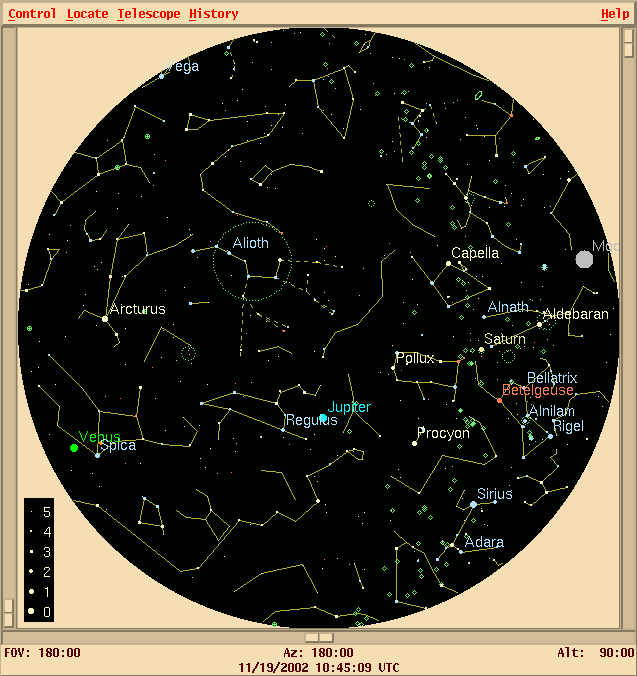
 Copyright © Michael Richmond.
This work is licensed under a Creative Commons License.
Copyright © Michael Richmond.
This work is licensed under a Creative Commons License.
There are ten or twenty "meteor showers" each year. A "shower" occurs when the Earth passes through the orbital path of a (usually) long-dead comet. The comet's path is filled with debris: bits of dust, ice and chunks of rock. As the Earth plows through the debris, material enters the atmosphere at high speeds (over 20 miles per second!), heats up the air through which it passes, and causes a brief glowing streak of light: a meteor.
One of these showers occurs in mid-November, and is called the "Leonid" shower because the direction from which the meteors appear to come is in the constellation Leo:

The Leonids are the result of material from Comet Tempel-Tuttle.

Every 33 years or so, the Earth encounters a particularly dense portion of the comet's orbital debris, causing a "meteor storm".

The year 2001 brought a very good display: I saw several hundred meteors in the early morning hours from a site not far from Rochester. Predictions this year call for another excellent shower, though the nearly full moon with wash out many of the faint objects. Below is a table showing predicted rates and times (thanks to Gary W. Kronk's meteor pages ).
| US, Canadian, and Mexican Local Times of Second Peak on November 19 |
|---|
|
Eastern Standard Time: 5:23 to 5:47 a.m. (includes Atlanta, Baltimore, Boston, Detroit, Indianapolis, Montreal, New York, Philadelphia, Miami, Toronto, Washington DC)
Central Standard Time: 4:23 to 4:47 a.m. (includes Chicago, Houston, Kansas City, Little Rock, Mexico City, Milwaukee, Minneapolis, Nashville, St. Louis) Mountain Standard Time: 3:23 to 3:47 a.m. (includes Albuquerque, Calgary, Cheyenne, Denver, Edmonton, Phoenix, Santa Fe) Pacific Standard Time: 2:23 to 2:47 a.m. (includes Las Vegas, Los Angeles, Portland, San Diego, San Francisco, Seattle) |
The numbers above aren't quite what you can expect to see: they assume that one is at a very dark site, a hundred miles or more from any big cities, and watches a storm for one complete hour with clear skies, no moon, the radiant near zenith. Since we aren't far from Rochester, and the skies aren't likely to be completely cloud-free, and the full moon will still be above the horizon, I would estimate the actual number we might see in the brief period of maximum to be one or two hundred, or perhaps five or eight per minute.
Find a dark spot, lie down on the ground (or on a blanket or lawn chair), and look up to the South:

 Copyright © Michael Richmond.
This work is licensed under a Creative Commons License.
Copyright © Michael Richmond.
This work is licensed under a Creative Commons License.